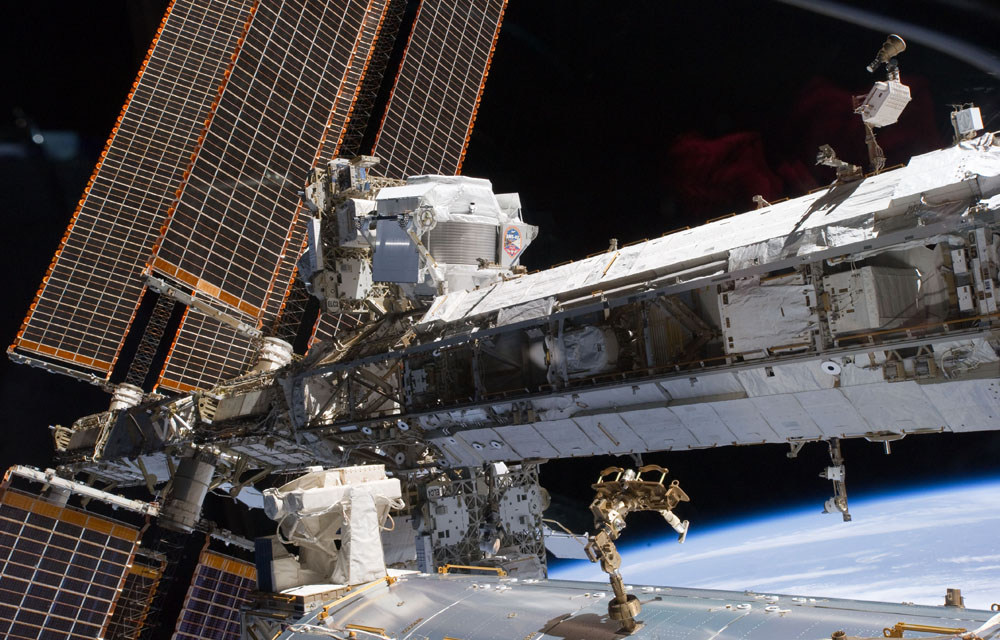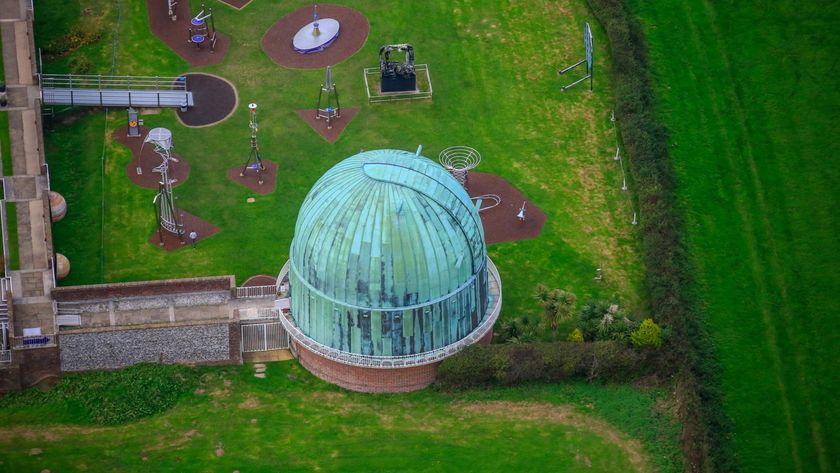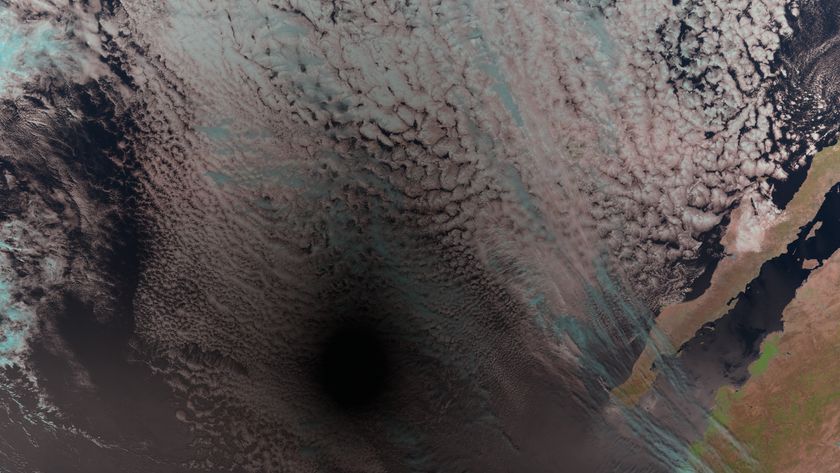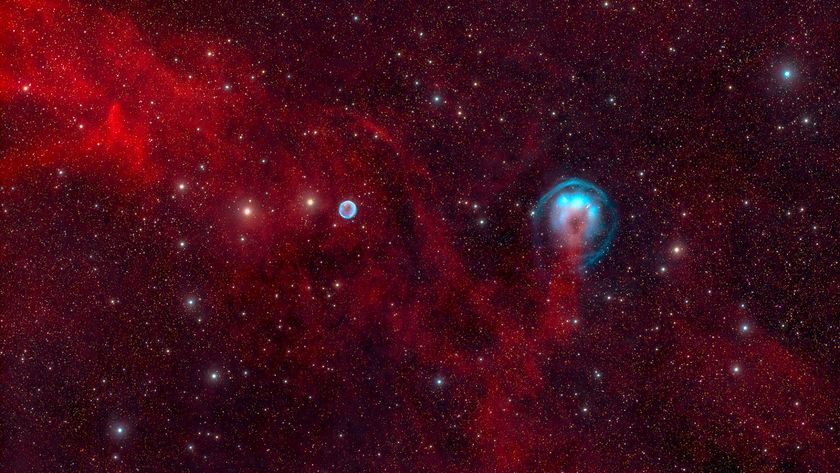Has Dark Matter Finally Been Found? Big News Coming Soon

BOSTON — Big news in the search for dark matter may be coming in about two weeks, the leader of a space-based particle physics experiment said today (Feb. 17) here at the annual meeting of the American Association for the Advancement of Science.
That's when the first paper of results from the Alpha Magnetic Spectrometer, a particle collector mounted on the outside of the International Space Station, will be submitted to a scientific journal, said MIT physicist Samuel Ting, AMS principal investigator.
Though Ting was coy about just what, exactly, the experiment has found, he said the results bear on the mystery of dark matter, the invisible stuff thought to outnumber regular matter in the universe by a factor of about six to one.
"It will not be a minor paper," Ting said, hinting that the findings were important enough that the scientists rewrote the paper 30 times before they were satisfied with it. Still, he said, it represents a "small step" in figuring out what dark matter is, and perhaps not the final answer. [Photos: AMS Hunts Exotic Particles In Space]
Some physics theories suggest that dark matter is made of WIMPS (weakly interacting massive particles), a class of particles that are their own antimatter partner particles. When matter and antimatter partners meet, they annihilate each other, so if two WIMPs collided, they would be destroyed, releasing a pair of daughter particles — an electron and its antimatter counterpart, the positron, in the process.
The Alpha Magnetic Spectrometer has the potential to detect the positrons and electrons produced by dark matter annihilations in the Milky Way. The $2 billion machine was installed on the International Space Station in May 2011, and so far, it has detected 25 billion particle events, including about 8 billion electrons and positrons. This first science paper will report how many of each were found, and what their energies are, Ting said.
Get the Space.com Newsletter
Breaking space news, the latest updates on rocket launches, skywatching events and more!
If the experiment detected an abundance of positrons peaking at a certain energy, that could indicate a detection of dark matter, because while electrons are abundant in the universe around us, there are fewer known processes that could give rise to positrons.
"The smoking gun signature is a rise and then a dramatic fall" in the number of positrons with respect to energy, because the positrons produced by dark matter annihilation would have a very specific energy, depending on the mass of the WIMPs making up dark matter, said Michael Turner, a cosmologist at the University of Chicago who is not involved in the AMS project. "That's the key signature that would arise."
Another telling sign will be the question of whether positrons appear to be coming from one direction in space, or from all around. If they're from dark matter, scientists expect them to be spread evenly through space, but if they're created by some normal astrophysical process, such as a star explosion, then they would originate in a single direction.
"There is a lot of stuff that can mimic dark matter," said theoretical physicist Lisa Randall of Harvard University, who is also not involved in the project but said she's eagerly awaiting the AMS results. "In these experiments the question is when do you have antimatter that could be explained by astrophysical sources, and when do you have something that really could be an indication that you have something new?"
Regardless of whether AMS has found dark matter yet, the scientists said they expected the question of dark matter's origin to become clearer soon. In addition to AMS, other experiments such as the Large Hadron Collider in Switzerland, and underground dark matter detectors buried around the world, could also make a discovery in the near future.
"We believe we're on the threshold of discovery," Turner said. "We believe this will be the decade of the WIMP."
Follow Clara Moskowitz on Twitter @ClaraMoskowitz or SPACE.com @Spacedotcom. We're also on Facebook & Google+.
Join our Space Forums to keep talking space on the latest missions, night sky and more! And if you have a news tip, correction or comment, let us know at: community@space.com.

Clara Moskowitz is a science and space writer who joined the Space.com team in 2008 and served as Assistant Managing Editor from 2011 to 2013. Clara has a bachelor's degree in astronomy and physics from Wesleyan University, and a graduate certificate in science writing from the University of California, Santa Cruz. She covers everything from astronomy to human spaceflight and once aced a NASTAR suborbital spaceflight training program for space missions. Clara is currently Associate Editor of Scientific American. To see her latest project is, follow Clara on Twitter.









